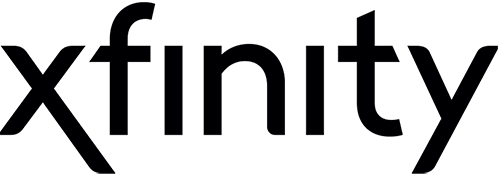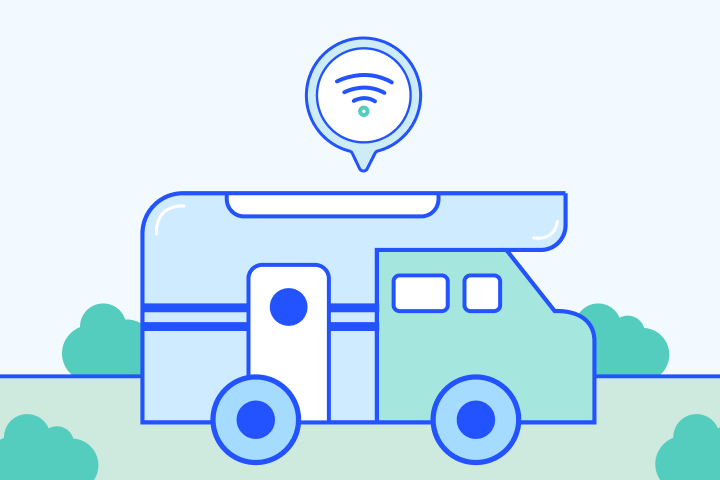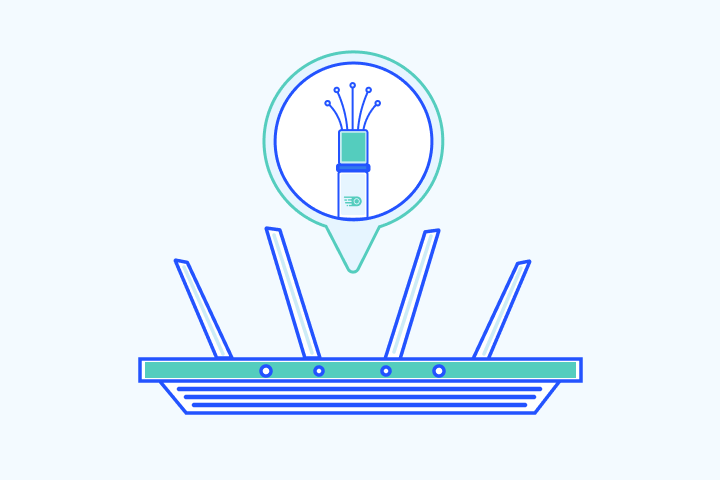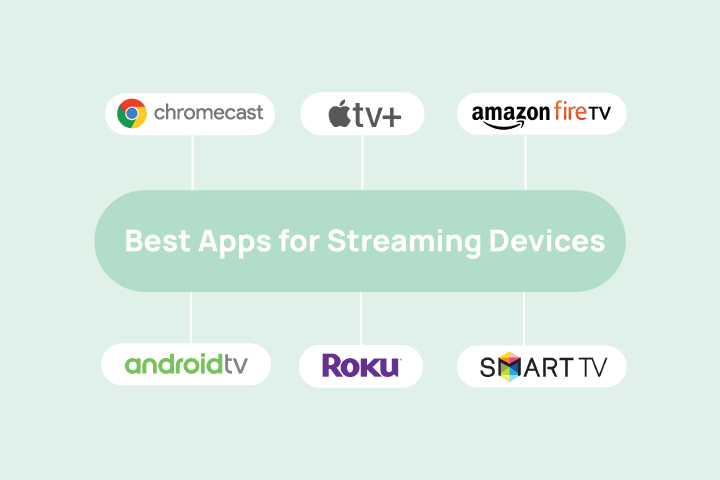Best Student Internet Deals & Discounts 2025
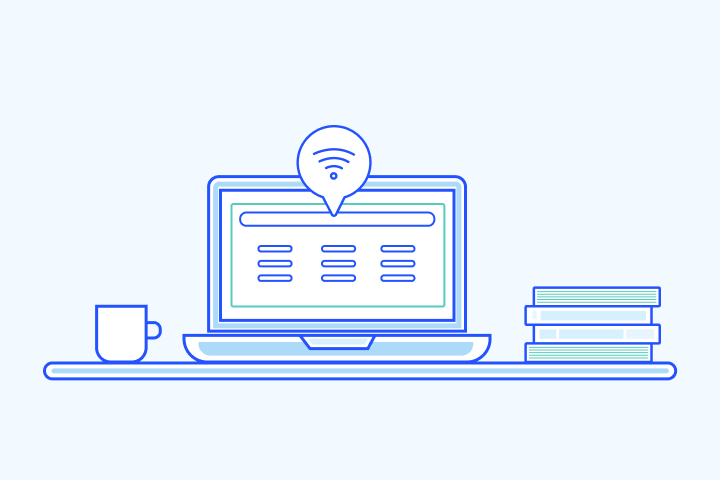
HighSpeedOptions prides itself on providing honest, quality content. While we may be compensated when you make a purchase through links on our site, all opinions are our own. Here's how we make money.
Table of Contents
College students need fast, stable internet service. It’s essential for educational success. Late-night study sessions, weekend essay marathons, cloud storage and computing, and online classes require reliable internet.
In this guide, we’ll take a look at internet providers with the best deals and discounts for college students. We’ll also cover other ways to save money on internet service, government assistance programs, and student tech discounts.
Key Takeaways: Best Student Internet Deals
- Top providers like Xfinity, Spectrum, Cox, and Optimum offer student-friendly internet starting under $50/month.
- Free internet is available on campus, in libraries, cafes, and some community centers.
- Government programs like Lifeline and Connect2Compete help low-income students save on internet costs.
- Considerations, such as speed, data plans, and contracts, are important to keep in mind while shopping for internet service.
- Student tech discounts from Microsoft, Apple, Lenovo, and others can save money on laptops and software.
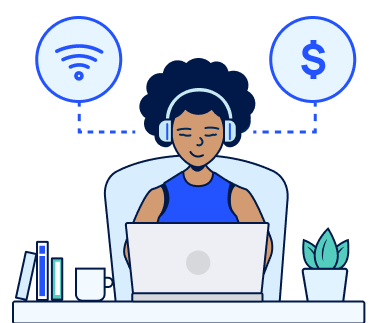
Affordable Internet For College Students
Looking for cheap internet for school? These major providers offer affordable plans designed for students, with perks like hotspot access, flexible contracts, and student discounts.
To begin, let’s discuss affordable internet options. You are limited to the internet providers and services available in your area. Here is a list of some of the largest providers in the nation and the discounts and perks they offer to students and educators.
Spectrum Deals for College Students
Spectrum Internet offers student internet starting at $30/month, available to students at participating colleges. Plans include up to 1 Gbps speed and access to WiFi hotspots.
Xfinity Internet for Students: High-Speed with Unlimited Data
Xfinity Internet offers a student-exclusive internet plan starting at $50/month for 1 Gbps speed, plus perks like unlimited data, WiFi equipment, and gift cards. Available to students at eligible colleges and universities, it’s a strong choice for both speed and savings.
Cox Internet for Students: Budget-Friendly & No Annual Commitment
Cox Internet doesn’t have student-specific plans, but its basic internet starts under $50/month and requires no annual contract—perfect for short-term college housing. With solid speeds and great customer support, it’s a flexible option for students on a budget.
Low-Cost Optimum Internet for Eligible Student Households
Optimum Internet’s Advantage Internet plan offers high-speed service for under $14.99/month to qualifying low-income households, including students. Eligibility may depend on participation in assistance programs, but it’s one of the lowest-cost options available.
Where to Get Free Internet as a Student
Many students can access free internet through on-campus WiFi, public libraries, local cafes, and community centers. Here are your best options for staying connected without paying a dime.
On-Campus WiFi
Most colleges and universities offer free WiFi throughout their campuses. To find out if your school offers free internet, contact your student services office.
Public Libraries
Another option is to check with your local library, since many libraries offer free internet access to their patrons. This is a great option if you need to use the internet for basic tasks, such as checking email, accessing course materials, and browsing the web.
Local Cafes, Retail Stores, & Restaurants
Many local cafes, retail stores (Apple, Best Buy, Target), and fast-food chains offer free Wi-Fi to their patrons.
Community Center
Some community centers, particularly in larger cities, offer free internet access to residents.
Ask a Neighbor
If you’re living in close quarters (like an apartment building), talk to your neighbors. Maybe you can borrow or work out a trade for their internet service.
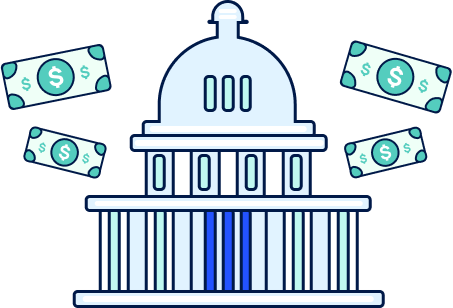
How to Get Government Help With Student Internet Costs
Students from low-income households may qualify for internet assistance through programs like Lifeline and Connect2Compete. These programs offer monthly discounts and subsidized plans.
Lifeline
Lifeline is a federal assistance program that subsidizes broadband internet for low-income households, domestic violence victims, disaster survivors, and others facing financial hardships. You can pair the program with an internet provider to get up to $9.25 off the cost of internet, phone, or internet bundles. To qualify for Lifeline, consumers must have an income at or below 135% of the Federal Poverty Guidelines. Or, you must be an active consumer in a government assistance program. Call to check internet availability near you and to see if you qualify.
Enhanced Tribal Benefits
If you live on tribal lands, the Enhanced Tribal Benefit offers more than just a standard internet discount. It provides extra support to ensure you stay connected to your education, no matter where you’re studying.
Connect2Compete
In the realm of affordable internet, nonprofits like Connect2Compete from Cox Internet are unsung heroes. Beyond simply providing internet, they’re empowering students in low-income households with access to education and opportunity.
Visit our thorough guide on affordable internet for low and fixed-income households for a more detailed rundown of government and provider assistance programs.
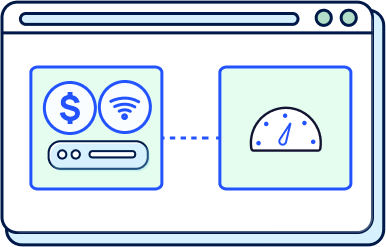
Student Internet Buying Guide: Speed, Data & Contract Tips
When choosing student internet, consider your average usage, data needs, and whether you’ll be sharing the connection. Here’s a quick breakdown of what matters most.
How Much Internet Speed Do Students Really Need?
Most online learning activities require 10–25 Mbps, but if you share internet with roommates or stream in HD, 100+ Mbps is best. Here’s a breakdown by activity.
| Student Activity | Speed Needed |
| Web Browsing and Email | At least 1 Mbps |
| General Studying and Research | At least 1 Mbps |
| File Sharing, Uploading Docs, and Cloud Storage | At least 10 Mbps; faster for larger files |
| Standard Definition (SD) Video Conferencing | At least 2 Mbps |
| High Definition (HD) Video Conferencing | At least 5 Mbps |
| Multi-user Video Conferencing | At least 25 Mbps* |
| Online Collaboration Tools (Figma, etc.) | At least 20 Mbps |
| Learning Management Systems | At least 1 Mbps; Faster for more intensive tasks |
| Online Gaming | At least 50 Mbps |
| Online Quizzes and Assessments | At least 1 Mbps |
| Student Activity | Web Browsing and Email |
| Speed Needed | At least 1 Mbps |
| Student Activity | General Studying and Research |
| Speed Needed | At least 1 Mbps |
| Student Activity | File Sharing, Uploading Docs, and Cloud Storage |
| Speed Needed | At least 10 Mbps; faster for larger files |
| Student Activity | Standard Definition (SD) Video Conferencing |
| Speed Needed | At least 2 Mbps |
| Student Activity | High Definition (HD) Video Conferencing |
| Speed Needed | At least 5 Mbps |
| Student Activity | Multi-user Video Conferencing |
| Speed Needed | At least 25 Mbps* |
| Student Activity | Online Collaboration Tools (Figma, etc.) |
| Speed Needed | At least 20 Mbps |
| Student Activity | Learning Management Systems |
| Speed Needed | At least 1 Mbps; Faster for more intensive tasks |
| Student Activity | Online Gaming |
| Speed Needed | At least 50 Mbps |
| Student Activity | Online Quizzes and Assessments |
| Speed Needed | At least 1 Mbps |
Not all of your time online as a student will be spent doing school-related tasks. There’s social media, music streaming, video streaming, and more. Taking these and all school-related activities into consideration, we recommend an internet plan of at least 100 Mbps. This will be more than enough for all the activities listed here.
And speaking of, video streaming is one area where students luck out for discounts. There are multiple student discounts on streaming services available for students. Some providers, like Xfinity, include streaming devices with their internet plans.
Unlimited Data
Assess your internet usage patterns and look for internet plans with unlimited data if you know you’ll use more than the monthly allotment from your internet provider. It may cost more per month, but it will be far less expensive than paying overage fees.
Annual Contracts
Consider the terms, potential fees and consequences, and your own internet needs before committing to any contracts. Opting for shorter-term contracts, or no contract at all, can provide more flexibility to adapt to changing circumstances during college years. Unless you know you’ll be at the same address for more than a year, it’s best to opt for a no-contract option if it’s available.

Where Students Can Save on Laptops and Devices in 2025
Students can save big on laptops, software, and accessories from brands like Microsoft, Apple, and Dell. Here are the best tech discounts available this year.
Microsoft Discounts
Microsoft offers Microsoft Office 365 free to students and educators. It includes Word, PowerPoint, Excel, OneNote, and Microsoft Teams. All you need is a valid school email.
Newegg Student Discount
Online computer hardware purveyor, Newegg, offers students up to a 10% discount on eligible products. Use your .edu email address when you order. Eligible products change, so check back regularly for updated items.
BestBuy Discounts
BestBuy student discounts go beyond computers and mice. It offers students of all ages discounts on other technological equipment like coffee makers, mini-fridges, and cameras.
DELL Discounts
DELL allows students to trade in their devices for new ones. It will also price-match competitors’ equivalent technology (i.e., Amazon).
Lenovo Discounts
Lenovo extends its discounts to college students and teachers using their ID.ME system. Each time you check out, Lenovo applies discounts on computers, laptops, and tablets.
Apple Discounts
Apple products are great, but they aren’t cheap. But if you’re a student, you can save some money on Macs and iPads. Apple is very generous with its education discount. College students, parents, faculty, staff, or homeschool teachers can qualify for Apple education discounts.

Wrap-Up: Find the Right Student Internet Plan for Your Needs
Reliable internet is not a luxury—it’s a must-have for college students. Whether you’re attending live video classes, submitting assignments through cloud platforms, or just unwinding with some streaming, your connection matters.
Before choosing a plan, consider:
- Your average daily usage
- Whether you’ll need unlimited data
- If your school partners with any local providers
- And how often your housing situation may change
Compare plans from top providers like Xfinity, Spectrum, Cox, and Optimum, and don’t overlook free options or government assistance programs if you qualify. Also, take advantage of student tech discounts to save even more on essential tools.
Bottom line: The best internet plan for you is one that fits your budget, supports your learning style, and gives you the flexibility to stay connected, wherever school takes you.
Student Internet Deals FAQs
The best internet provider varies by location, but Spectrum, Xfinity, Cox, and Optimum all offer competitive student plans. Xfinity and Spectrum are especially popular for their high speeds, flexible terms, and added perks like free WiFi hotspots and gift cards.
Yes, many internet providers offer student-specific deals or discounts. Some, like Xfinity and Spectrum, partner with colleges to provide special pricing, while others offer low-cost plans through government or nonprofit programs.
You can search by ZIP code on comparison sites like HighSpeedOptions.com or check with your school’s housing or IT office. Local providers may also have exclusive offers for students in specific areas.
Yes, 100 Mbps is more than sufficient for video conferencing, streaming video, file uploads, and sharing internet with roommates. It also handles non-academic use like gaming or HD video streaming without lag.
Yes. Many colleges offer free on-campus WiFi. Public libraries, cafes, and community centers also provide free internet access. Eligible students may qualify for free or discounted service through programs like Lifeline or Connect2Compete.
It depends. While not illegal in most places, sharing internet may violate your provider’s terms of service. If allowed, be sure to secure your connection with a password and only share with trusted individuals.
Lifeline is a federal assistance program that offers up to $9.25 off monthly internet or phone bills. Students qualify if their household income is at or below 135% of the Federal Poverty Guidelines, or if they participate in eligible government assistance programs.
The Enhanced Tribal Benefit is part of Lifeline and offers greater discounts—up to $34.25/month—for students and residents on Tribal lands. Eligibility is based on residency and participation in qualifying assistance programs.
For most school tasks, 10–25 Mbps is adequate. However, for activities like video conferencing, file sharing, or multi-user environments, 50–100 Mbps is recommended for smoother performance.
Yes, 25 Mbps is typically sufficient internet speed for high-definition Zoom calls and most video conferencing platforms. However, if multiple people are using the internet simultaneously, you may experience lag without a faster connection.
For 3–4 users doing schoolwork, streaming, and gaming, a 100–200 Mbps plan is ideal. It ensures everyone can work and stream without slowdown, especially during peak hours.
If you stream, game, or attend frequent video classes, unlimited data is a smart choice. It prevents overage fees and ensures consistent service, especially in shared student housing or households with multiple devices.


